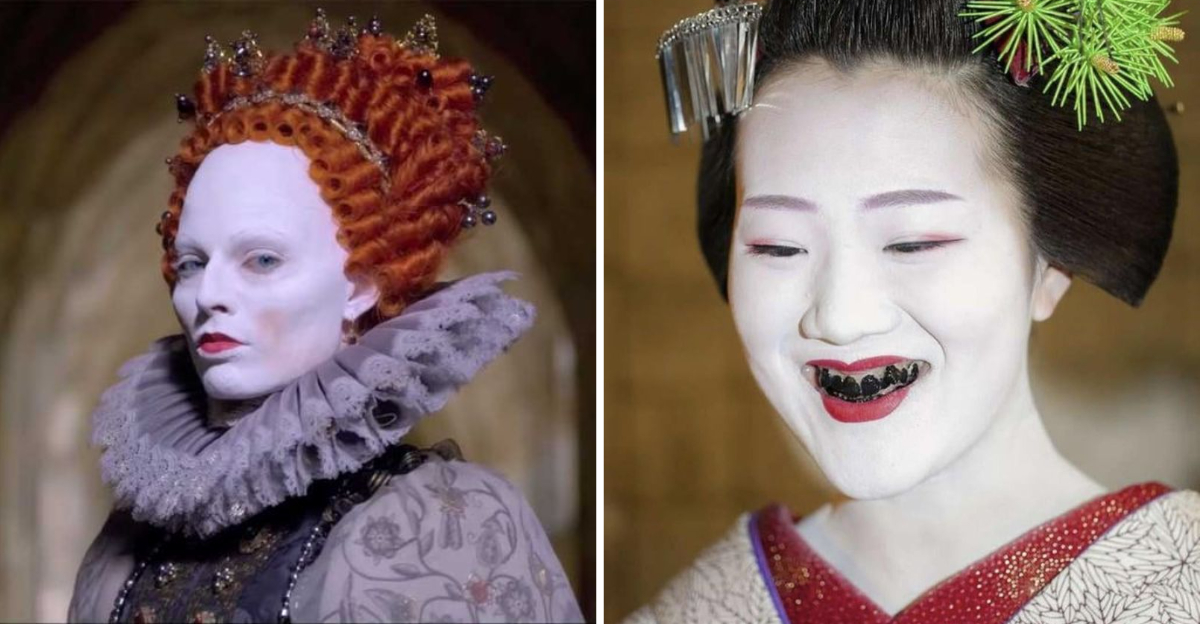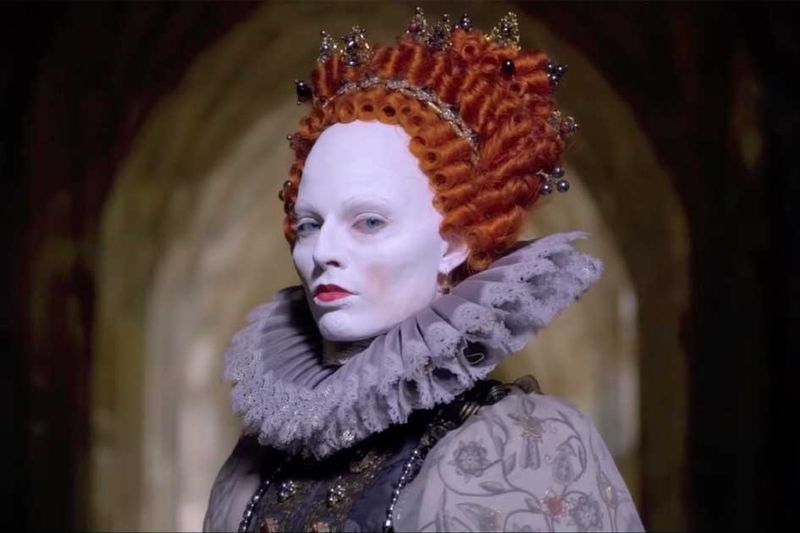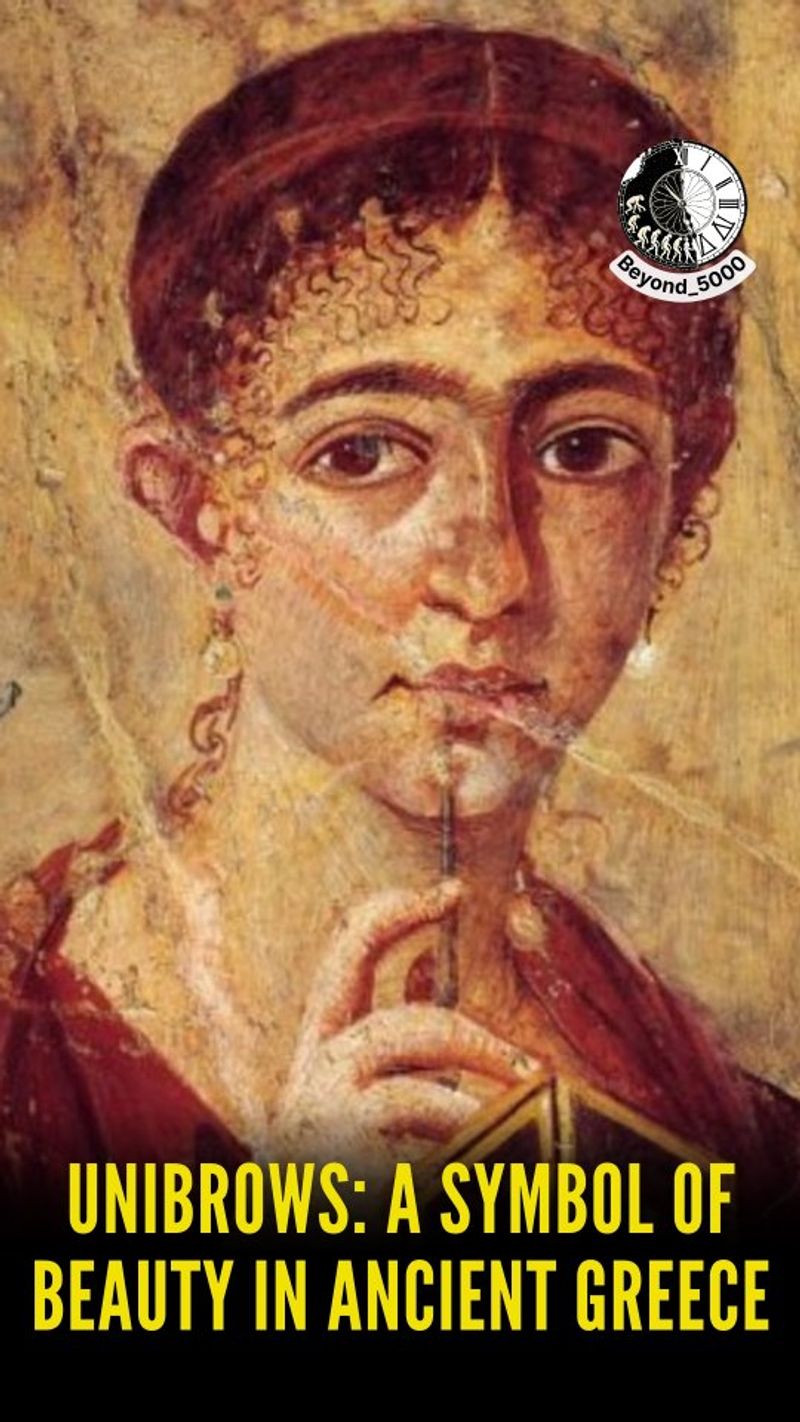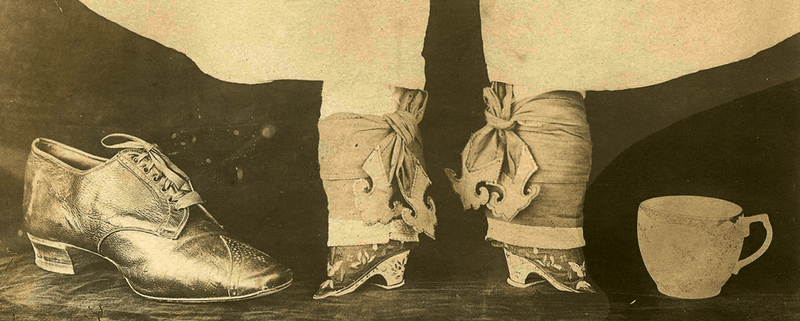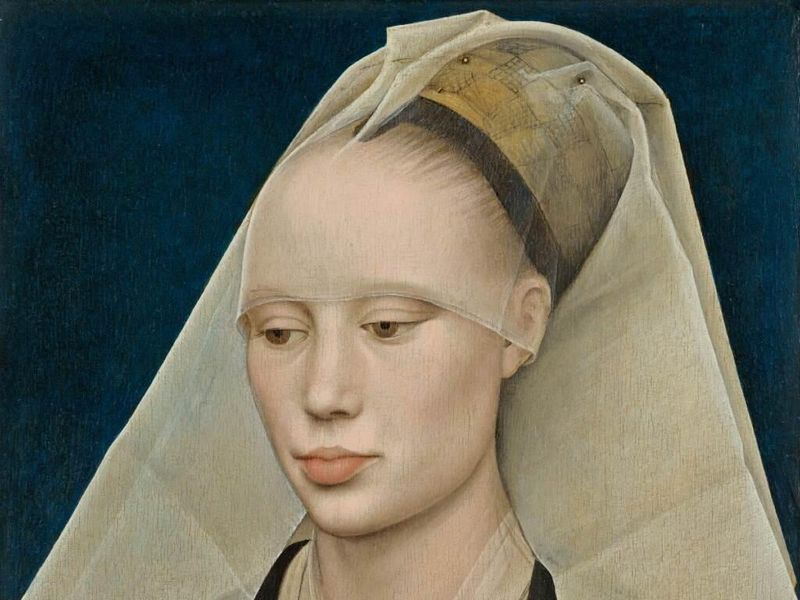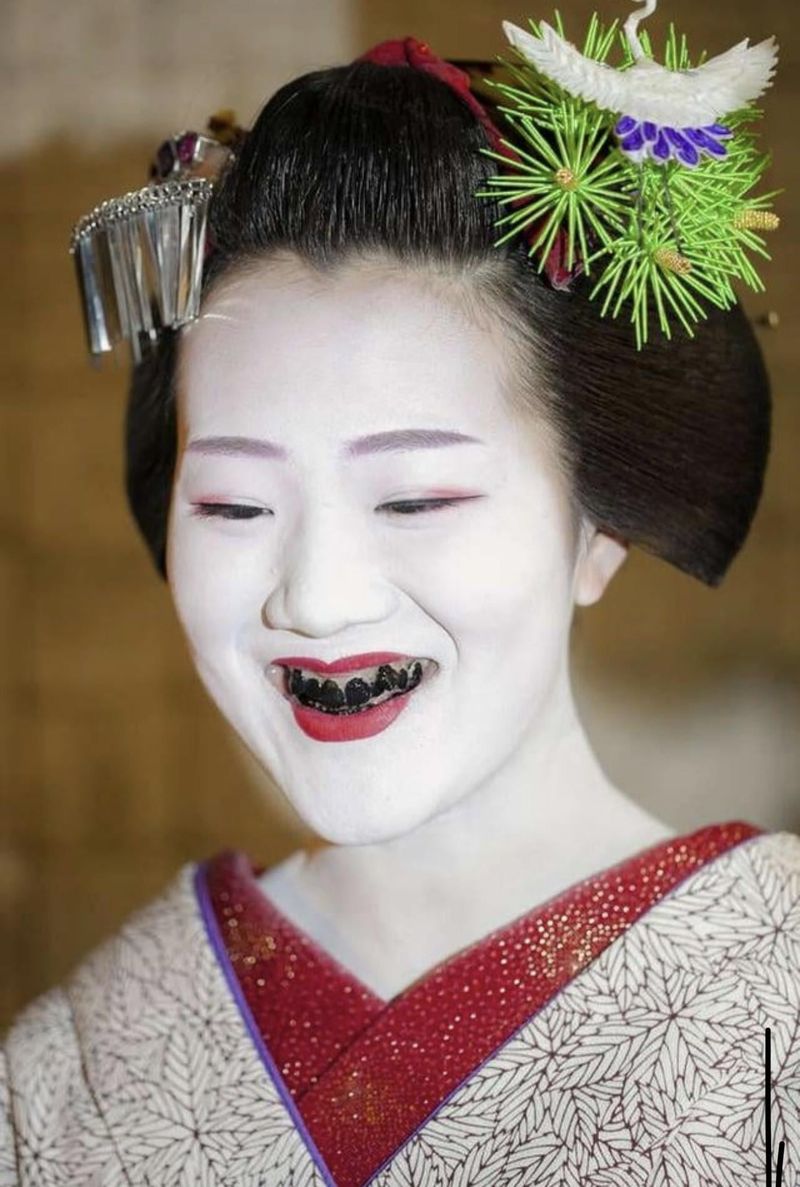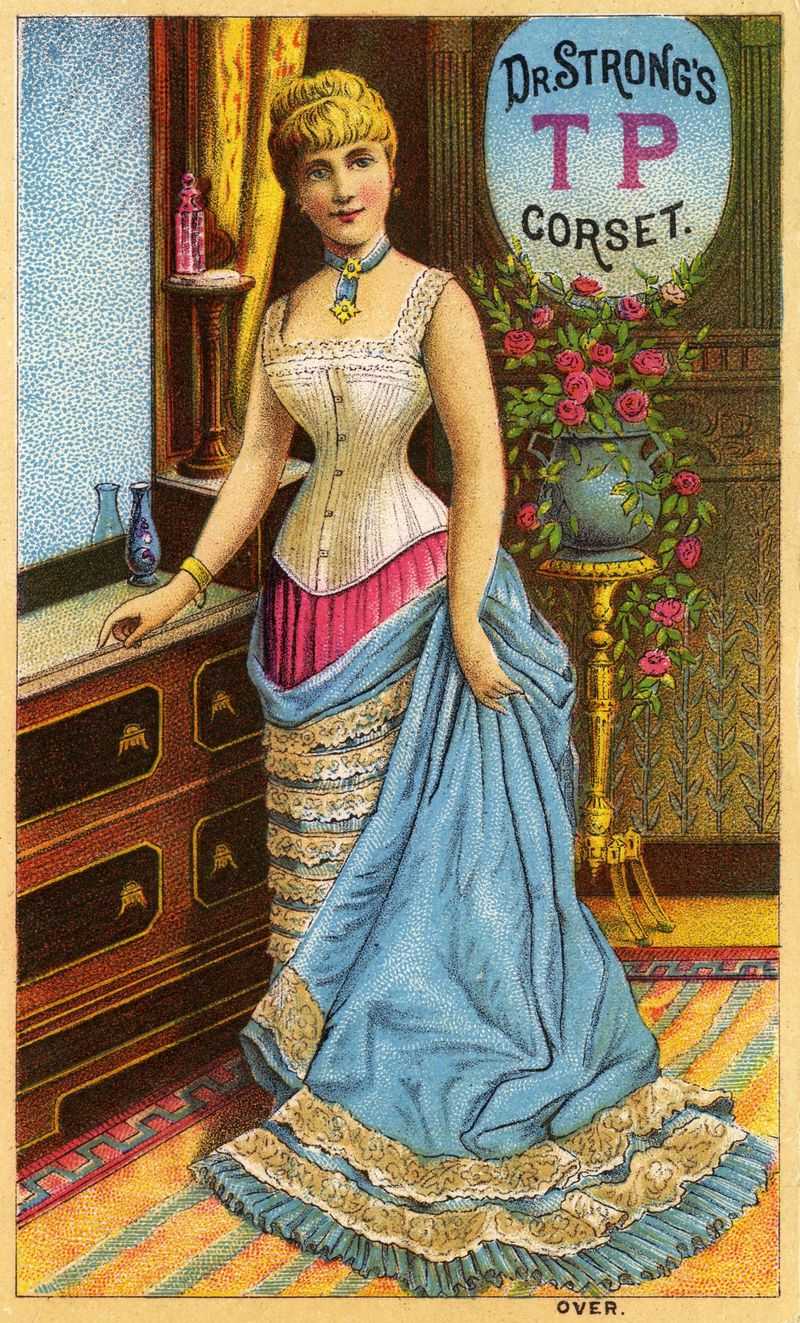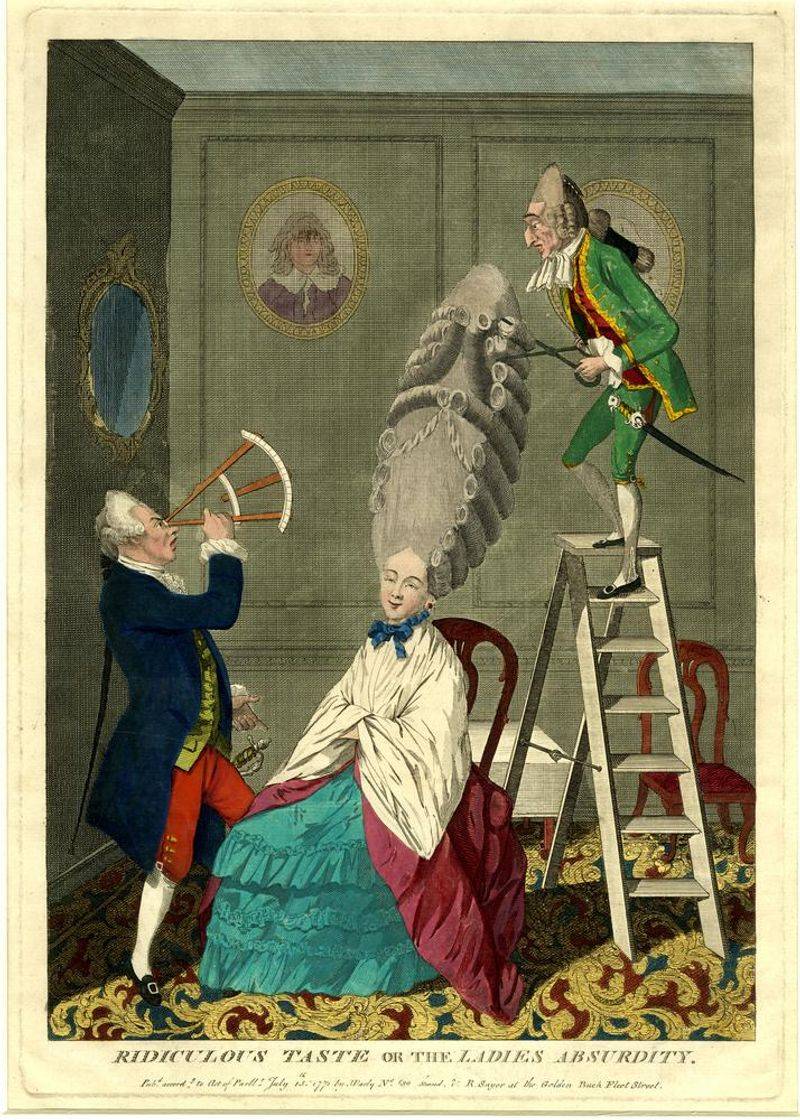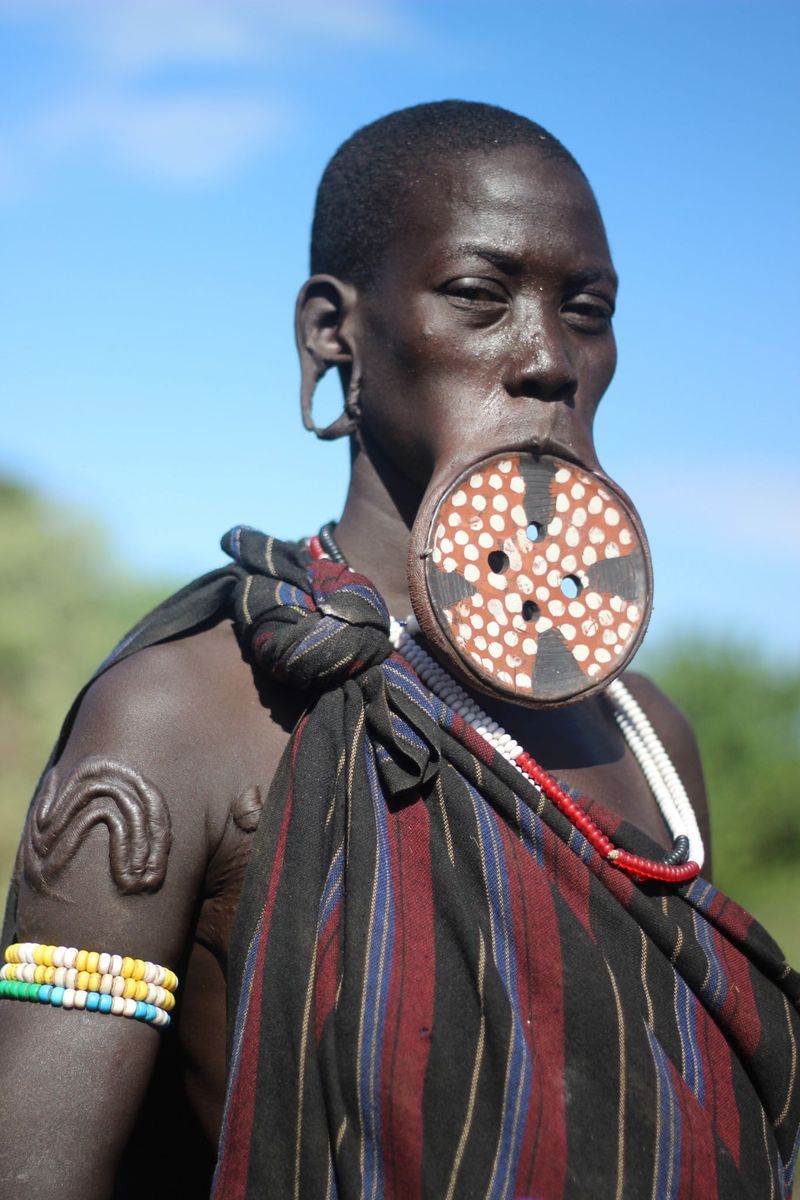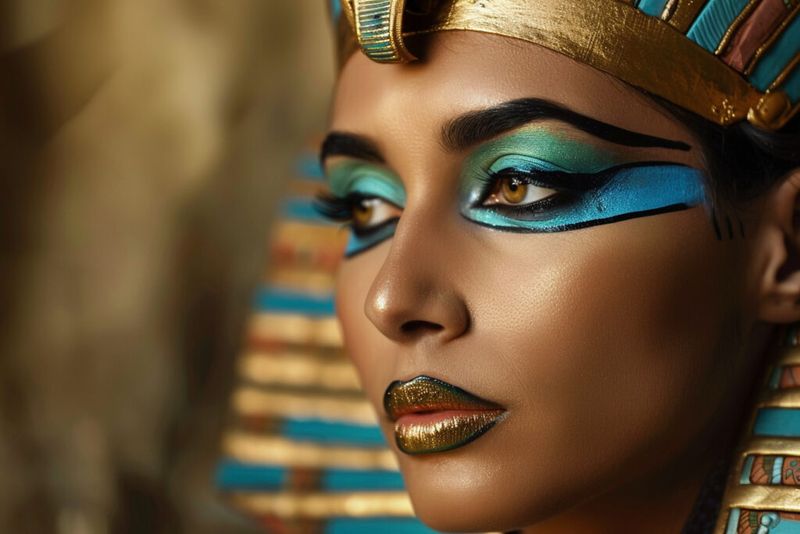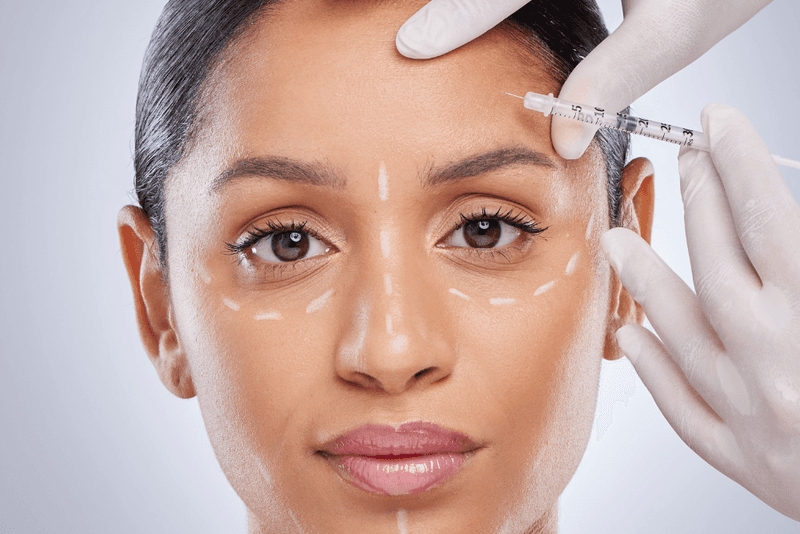Beauty standards have changed dramatically throughout history. People from different times and places had unique ideas about what made someone attractive. From dangerous makeup to painful body modifications, these beauty trends weren’t just about looking good—they showed social status, cultural values, and personal identity. Let’s explore twelve fascinating beauty practices that once ruled the world.
1. Deadly White Face Paint
Aristocrats in ancient Rome and Elizabethan England craved skin as white as marble. Their secret weapon? A mixture of white lead and vinegar called ‘Venetian ceruse’ that slowly poisoned them.
Queen Elizabeth I became famous for her ghostly complexion achieved through this toxic paste. The pale look wasn’t just a fashion statement—it proved you were wealthy enough to stay indoors instead of working in the sun.
Many users suffered hair loss, skin damage, and even death from lead poisoning. Beauty, it seems, was literally deadly.
2. The Prized Unibrow
Ancient Greeks admired the connected eyebrow as the height of feminine beauty. Women without natural unibrows often created artificial ones using dark powders and plant dyes.
Far from being embarrassing, the unibrow symbolized intelligence, purity, and natural beauty. Greek artwork frequently depicts goddesses and noblewomen with this distinctive feature.
Frida Kahlo would have been considered extraordinarily beautiful in ancient Athens! This striking contrast to modern Western beauty standards reminds us how cultural beauty ideals constantly evolve.
3. Bound Lotus Feet
Girls as young as five in Imperial China endured excruciating pain as their feet were tightly bound to prevent growth. The ideal ‘lotus foot’ measured a mere 3-4 inches long—creating a tiny, pointed shape considered irresistibly dainty.
Breaking and folding the foot bones created the desired arch and small size. Women with bound feet moved with a distinctive swaying walk that men found alluring.
Despite causing lifelong disability, this practice persisted for nearly a millennium before being outlawed in the early 20th century.
4. The Fashionable High Forehead
Medieval noblewomen took tweezers to their hairlines with startling dedication. A broad, high forehead signaled intelligence and aristocratic breeding during the Middle Ages.
Women plucked or shaved their front hairlines back several inches, sometimes removing eyebrows completely. Portraits from this era showcase these elongated foreheads as the pinnacle of feminine beauty.
Queen Elizabeth I adopted this trend too, combining it with her signature red wigs. The painful practice left many women permanently bald at the front—a steep price for fashion!
5. Jet-Black Teeth
Smiles took a dramatic turn in Edo period Japan when black teeth became the gold standard of beauty. Ohaguro, the practice of dyeing teeth pitch-black using iron filings dissolved in vinegar, created a lacquered appearance considered refined and attractive.
Married women, courtesans, and samurai wives all embraced this striking look. Beyond aesthetics, the dye actually strengthened enamel and prevented tooth decay—making it surprisingly practical.
When Empress Shōken appeared publicly with white teeth in 1873, the thousand-year tradition began fading into history.
6. Waist-Crushing Corsets
Victorian women squeezed themselves into torturous devices for the coveted 18-inch waist. Tight-lacing corsets reshaped bodies by compressing ribs and shifting internal organs to create dramatic hourglass figures.
Young girls started wearing ‘training corsets’ early to mold developing bodies. The extreme constriction caused fainting, digestive problems, and even deformed ribs over time.
The tiniest-waisted women became celebrities—Ethel Granger achieved a record-breaking 13-inch measurement through years of progressive tightening. Such dedication to beauty bordered on body modification.
7. Aristocratic Blue Veins
French nobility in the 1700s weren’t content with natural paleness—they wanted visible proof of their blue blood. Ladies painted delicate blue lines across their décolletage and temples to simulate visible veins beneath translucent skin.
Marie Antoinette and her court embraced this peculiar trend. The artificial veins served as a status symbol, proving one’s skin was so fair and delicate that the bluish circulatory system showed through.
Some women enhanced the effect by applying blue-tinted powder to their skin. The more visible your ‘veins,’ the more aristocratic you appeared!
8. Towering Powdered Wigs
King Louis XIV started wearing wigs to hide his balding head, unwittingly launching a century-long fashion frenzy. Soon, both men and women sported massive powdered wigs reaching heights of two feet or more!
These elaborate ‘poufs’ became walking art installations. Marie Antoinette famously wore a wig featuring a fully-rigged sailing ship to celebrate a French naval victory.
Maintaining these monstrosities required professional stylists, specialized sleeping arrangements, and constant powdering to combat lice. Wearers couldn’t pass through doorways without ducking—fashion literally went to their heads!
9. Stretched Lip Plates
Among Ethiopia’s Mursi tribe, a young woman’s beauty journey begins around age 15 with a small cut in her lower lip. Progressively larger clay discs stretch the lip over months and years until it can hold a plate several inches wide.
The size matters—larger plates command higher bride prices and greater respect. What outsiders might view as extreme body modification represents cultural identity, feminine beauty, and tribal belonging.
Each woman decorates her unique plate with colorful designs. Despite outside pressure to abandon the practice, many Mursi women proudly maintain this centuries-old tradition.
10. Kohl-Rimmed Egyptian Eyes
‘May my eyes be painted with kohl so I might gaze upon you,’ reads an ancient Egyptian love poem. Both men and women outlined their eyes with black kohl made from ground galena ore, creating the dramatic almond-shaped look we associate with figures like Cleopatra.
Beyond beauty, kohl served practical purposes. The lead-based mixture reflected harsh sunlight and repelled flies that spread eye diseases.
Egyptians believed the makeup had magical protective properties too. Green malachite eye shadow complemented the look, with makeup containers buried alongside the deceased for use in the afterlife.
11. The Coco Chanel Tan
Before the 1920s, tanned skin signaled working-class status. Everything changed when fashion icon Coco Chanel accidentally got sunburned on a Mediterranean yacht trip.
Her bronzed glow sparked a revolution. Suddenly, a tan suggested you had leisure time for vacations and outdoor recreation—the ultimate status symbol. By the 1960s, sunbathing became a national pastime.
Magazines published ‘tanning schedules’ while pale skin creams gathered dust. The irony wasn’t lost on laborers who had spent generations trying to avoid sun exposure that the wealthy now actively sought.
12. Modern Injectable Beauty
From experimental treatment to beauty staple—Botox’s journey revolutionized our relationship with aging. First approved for cosmetic use in 2002, these purified toxin injections temporarily paralyze facial muscles to smooth wrinkles.
Celebrity culture normalized the frozen forehead look. The ‘lunchtime procedure’ concept made cosmetic enhancement accessible to everyday people, not just Hollywood stars.
Dermal fillers soon followed, plumping lips and cheeks for that coveted youthful volume. What began as a taboo secret has transformed into a multi-billion dollar industry where people openly discuss their ‘tweakments.’
